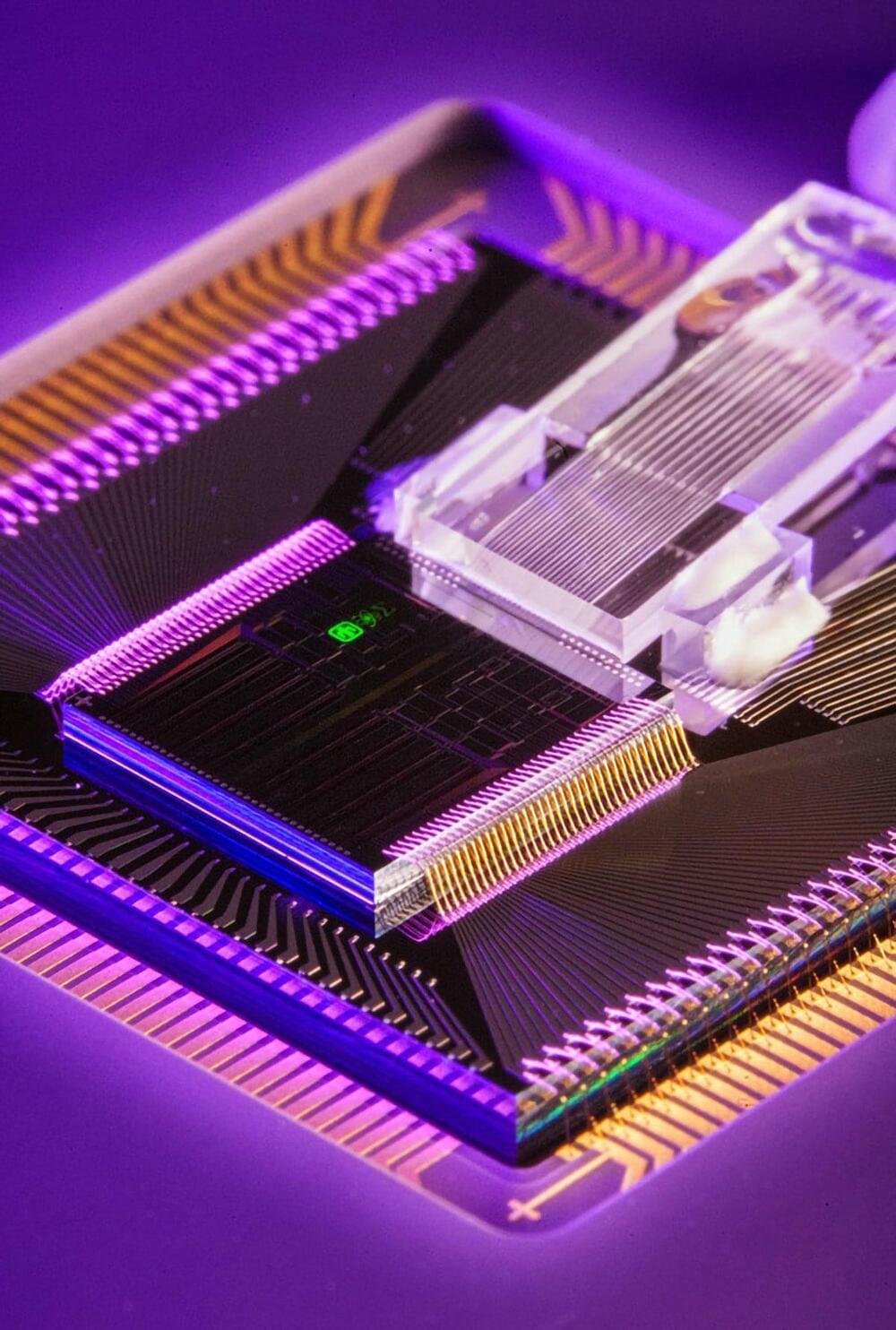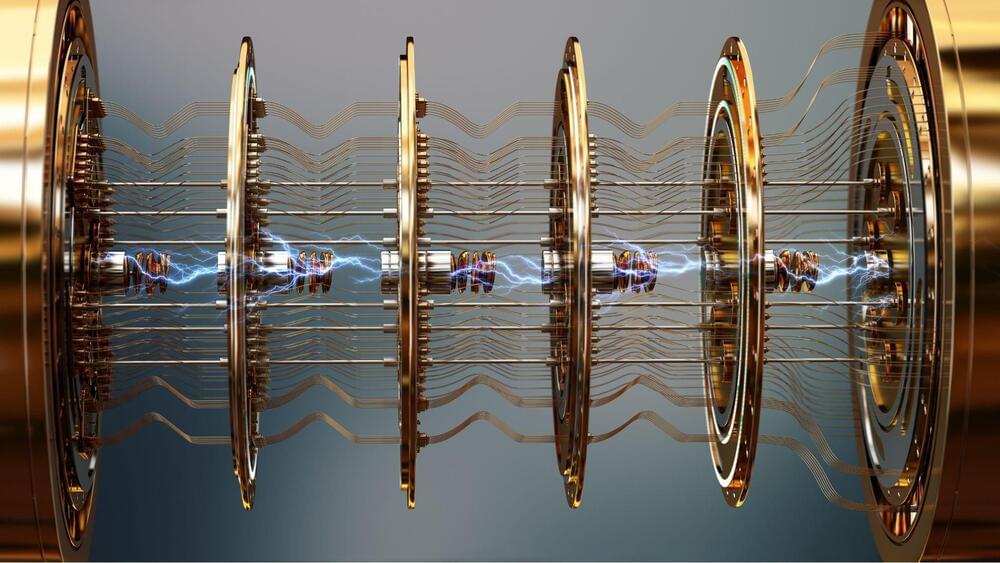For the decades since their discovery, seismic signals known as PKP precursors have challenged scientists. Regions of Earth’s lower mantle scatter incoming seismic waves, which return to the surface as PKP waves at differing speeds.



Peel apart a smartphone, fitness tracker or virtual reality headset, and inside you’ll find a tiny motion sensor tracking its position and movement. Bigger, more expensive versions of the same technology, about the size of a grapefruit and a thousand times more accurate, help navigate ships, airplanes and other vehicles with GPS assistance.
Now, scientists are attempting to make a motion sensor so precise it could minimize the nation’s reliance on global positioning satellites. Until recently, such a sensor — a thousand times more sensitive than today’s navigation-grade devices — would have filled a moving truck. But advancements are dramatically shrinking the size and cost of this technology.
For the first time, researchers from Sandia National Laboratories have used silicon photonic microchip components to perform a quantum sensing technique called atom interferometry, an ultra-precise way of measuring acceleration. It is the latest milestone toward developing a kind of quantum compass for navigation when GPS signals are unavailable.

Researchers have successfully demonstrated negative entanglement entropy using classical electrical circuits as stand-ins for complex quantum systems, providing a practical model for exploring exotic quantum phenomena and advancing quantum information technology.
Entanglement entropy quantifies the degree of interconnectedness between different parts of a quantum system. It indicates how much information about one part reveals about another, uncovering hidden correlations between particles. This concept is essential for advancing quantum computing and quantum communication technologies.
To understand what negative entanglement entropy means, we will first need to know what entanglement and entropy are.

In short, companies are no longer hiding their optimism over replacing human labor with AI, an unfortunate reality for those looking to maintain a stable job.
Despite tech conglomerate Cisco posting $10.3 billion in profits last year, it’s still laying off 5,500 workers as part of an effort to invest more in AI, SFGATE reports.
It joins a litany of other companies like Microsoft and Intuit, the maker of TurboTax, that have used AI as justification for the mass culling of its workforce.
The layoffs at Cisco came to light in a notice posted with the Securities and Exchange Commission this week, affecting seven percent of its staff.

As of August 2024, the global employment landscape is facing significant turbulence, with more than 130,000 employees laid off across nearly 400 companies. Tech giants like Google, IBM, Apple, Amazon, SAP, Meta, and Microsoft have contributed to these staggering figures, indicating a major recalibration within the job market.
According to industry experts, this trend is accelerating as the integration of artificial intelligence (AI) and automation prompts companies to streamline operations. Amidst this upheaval, Ramesh Alluri Reddy, CEO of TeamLease Degree Apprenticeship, sheds light on layoffs, workforce reshaping, and the potential for recovery.
Join Jeff Bezos for a tour inside Blue Origin’s New Glenn Production Facility at Cape Canaveral, Florida. This video was shot on May 30th, 2024.
00:00 — Intro.
00:40 — Interview Starts [Lobby]
05:20 — Recovering Saturn V Engines.
08:35 — Tank Production.
16:40 — Second Stage.
23:50 — Aft Section.
33:15 — Forward Section.
42:08 — Machine Shop.
51:35 — Payload Adapter and Fairings.
1:00:00 — Engines.
1:11:20 — Outro.
Want to support what I do? Consider becoming a Patreon supporter for access to exclusive livestreams, our discord channel! — / everydayastronaut.
Or become a YouTube member for some bonus perks as well! — / @everydayastronaut.
The best place for all your space merch needs!
https://everydayastronaut.com/shop/
All music is original! Check out my album \.

Researchers at Georgia State University have identified novel states of matter within a two-dimensional flatland system.
Notably, the research team has explored the complex phenomenon known as the fractional quantum Hall effect (FQHE) and uncovered completely new discoveries.
Their research highlights the unexpected behavior of FQHE states that split and intersect in new ways when a supplementary current is applied.
The Texas Heart Institute (THI) and BiVACOR®, a clinical-stage medical device company, announced today the successful first-in-human implantation of the BiVACOR Total Artificial Heart (TAH) as part of the U.S. Food and Drug Administration (FDA) Early Feasibility Study (EFS) on July 9, 2024.
BiVACOR’s TAH is a titanium-constructed biventricular rotary blood pump with a single moving part that utilizes a magnetically levitated rotor that pumps the blood and replaces both ventricles of a failing heart.

But does the lack of eyes mean that language models can’t ever “understand” that a lion is “larger” than a house cat? Philosophers and scientists alike have long considered the ability to assign meaning to language a hallmark of human intelligence — and pondered what essential ingredients enable us to do so.
Peering into this enigma, researchers from MIT’s Computer Science and Artificial Intelligence Laboratory (CSAIL) have uncovered intriguing results suggesting that language models may develop their own understanding of reality as a way to improve their generative abilities. The team first developed a set of small Karel puzzles, which consisted of coming up with instructions to control a robot in a simulated environment. They then trained an LLM on the solutions, but without demonstrating how the solutions actually worked. Finally, using a machine learning technique called “probing,” they looked inside the model’s “thought process” as it generates new solutions.
After training on over 1 million random puzzles, they found that the model spontaneously developed its own conception of the underlying simulation, despite never being exposed to this reality during training. Such findings call into question our intuitions about what types of information are necessary for learning linguistic meaning — and whether LLMs may someday understand language at a deeper level than they do today.
